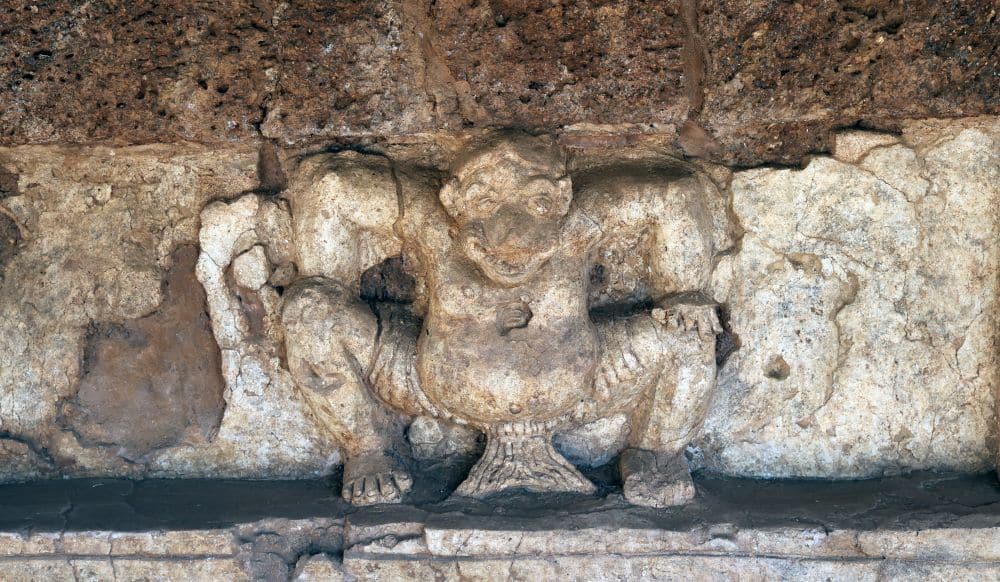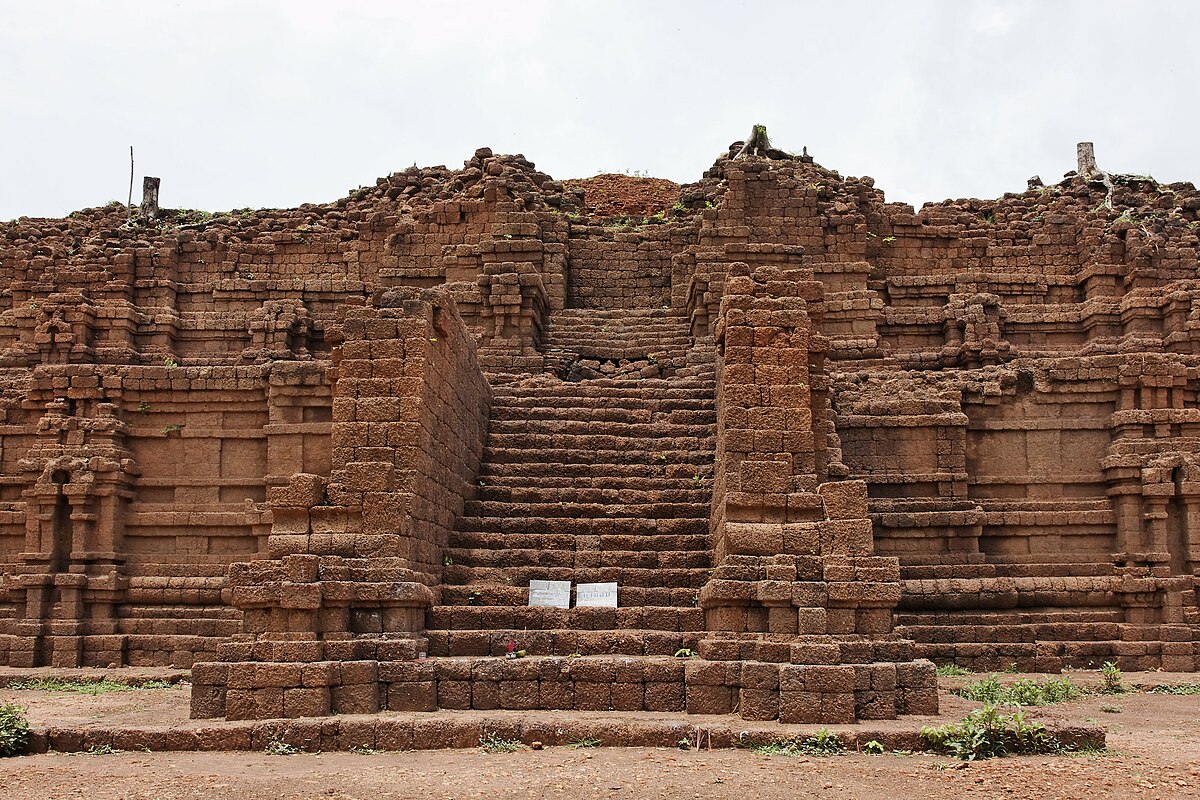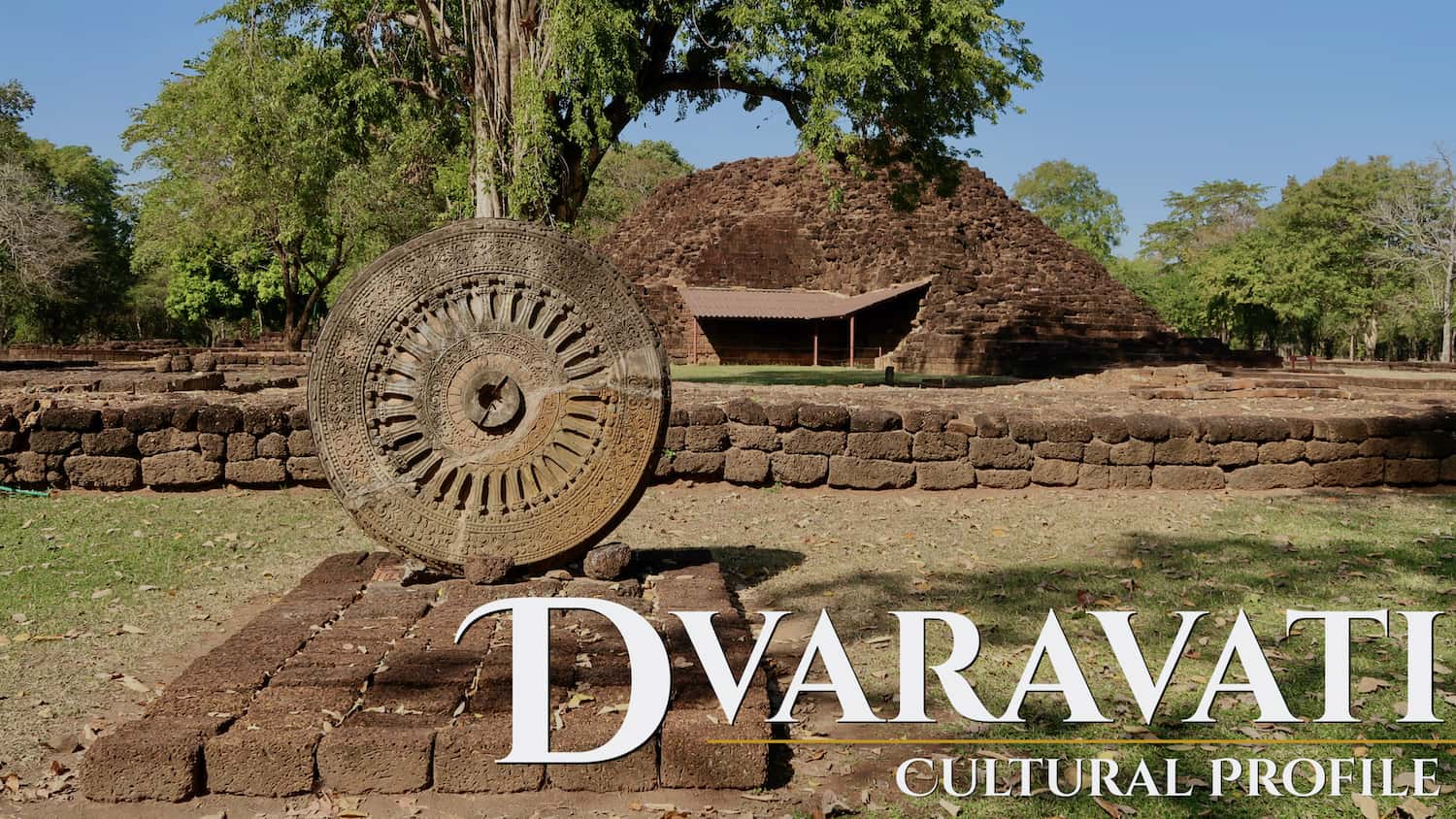Continued from:
 www.gt-rider.com
www.gt-rider.com
Si Thep World Heritage Site
27 km south of Wichian Buri city lies the new World Heritage site of Si Thep.

This world heritage site dates back 1,700 years to Mon—Dvaravati and features Khmer, Hindu, and Buddhist monuments.


Si Thep was only granted World Heritage status recently in September 2023.


Discovered in 1904 by Prince Damrong Rajanubhab, the site was seriously excavated in 1978, and in 1984, the Fine Arts Department listed it as a Thai historical park.
The bones of a pre-historic elephant, men and women, have been found on the site. They are on display as found in a pit.
The main skeleton is a woman in her 30s-40s who was found entombed with a dog and two agate necklaces.
At a higher level – so from a later period – is a partial elephant skeleton, also deliberately buried.


Historical evidence found on the site suggests Si Thep suggests it was the centre of the Dvaravati mandalas.


Via royal intermarriage, it was also considered the sister city of Sema, the capital of the neighbouring state of Canasapura.
The ruins of ancient Muang Sema are to the S-W, 130 km away in Nakhon Ratchasima province.
Around the 14th century, Si Thep lost importance and was almost abandoned.

There are two parts: an inner moated city, Muang Ngai, of 4.7 square km, and an outer section, Muang Nok, with several ruins.
The inner moated section has six city gates, 40 historical ruins and 70 ponds.
The ruins have features of Hindu, Khmer, and Dvaravati civilisations, indicating Si Thep's importance over the centuries.








Khao Klang Nai.
A brick mound in the inner city's centre is an ancient Buddhist stupa: Khao Klang Nai.


It was constructed between the 6th and 7th centuries.


A feature of these ruins is the Krishna statues around the base.


The presence of these Krishna statues suggests that Si Thep City was maybe the first centre or the main centre of what is called “Dvaravati.”
Prang Song Phi Nong


It was built during the 11th or 12th century in the Baphuon style of Khmer art during the Angkor Wat period.




When you enter the park, you need to buy a ticket and take a guided bus tour.


Multiple buses are running around the park, so you can hop on & off at each set of ruins as you wish,
I hopped back on a bus, but it went "the wrong way" & ended up back at the start; it was a returning bus. 55
I know I missed quite a bit, but I was well satisfied with what I saw.
I had a nice cold coconut drink, got on my bike & moved on to the next destination - Phimai.
And promptly forgot about the big ruins outside the city!!

 maps.app.goo.gl
maps.app.goo.gl

 maps.app.goo.gl
maps.app.goo.gl
I need to return!
See also

 worldheritagesites.net
worldheritagesites.net

 www.museumthailand.com
www.museumthailand.com

 en.wikipedia.org
en.wikipedia.org

 www.siamguides.com
www.siamguides.com

 www.bangkokpost.com
www.bangkokpost.com

 www.bangkokpost.com
www.bangkokpost.com

 pathsunwritten.com
pathsunwritten.com
Chiang Khong – Lower Esarn Meander July 2024. Part 9: Loei - Chumpae - Wichian Buri.
After Dan Sai & the Phi Ta Khon colour extravaganza it ws back on the road with a few quick overnight stops along the way. 1. Loei. 2. Chumpae. 3. Wichian Buri. Loei has always been a favourite little town of mine on account of the relaxing ambiance & fresh air you always get there. The King's...
Si Thep World Heritage Site
27 km south of Wichian Buri city lies the new World Heritage site of Si Thep.
This world heritage site dates back 1,700 years to Mon—Dvaravati and features Khmer, Hindu, and Buddhist monuments.
Si Thep was only granted World Heritage status recently in September 2023.
Discovered in 1904 by Prince Damrong Rajanubhab, the site was seriously excavated in 1978, and in 1984, the Fine Arts Department listed it as a Thai historical park.
The bones of a pre-historic elephant, men and women, have been found on the site. They are on display as found in a pit.
The main skeleton is a woman in her 30s-40s who was found entombed with a dog and two agate necklaces.
At a higher level – so from a later period – is a partial elephant skeleton, also deliberately buried.
Historical evidence found on the site suggests Si Thep suggests it was the centre of the Dvaravati mandalas.
Via royal intermarriage, it was also considered the sister city of Sema, the capital of the neighbouring state of Canasapura.
The ruins of ancient Muang Sema are to the S-W, 130 km away in Nakhon Ratchasima province.
Around the 14th century, Si Thep lost importance and was almost abandoned.
There are two parts: an inner moated city, Muang Ngai, of 4.7 square km, and an outer section, Muang Nok, with several ruins.
The inner moated section has six city gates, 40 historical ruins and 70 ponds.
The ruins have features of Hindu, Khmer, and Dvaravati civilisations, indicating Si Thep's importance over the centuries.
Khao Klang Nai.
A brick mound in the inner city's centre is an ancient Buddhist stupa: Khao Klang Nai.
It was constructed between the 6th and 7th centuries.
A feature of these ruins is the Krishna statues around the base.
The presence of these Krishna statues suggests that Si Thep City was maybe the first centre or the main centre of what is called “Dvaravati.”
Prang Song Phi Nong
It was built during the 11th or 12th century in the Baphuon style of Khmer art during the Angkor Wat period.
When you enter the park, you need to buy a ticket and take a guided bus tour.
Multiple buses are running around the park, so you can hop on & off at each set of ruins as you wish,
I hopped back on a bus, but it went "the wrong way" & ended up back at the start; it was a returning bus. 55
I know I missed quite a bit, but I was well satisfied with what I saw.
I had a nice cold coconut drink, got on my bike & moved on to the next destination - Phimai.
And promptly forgot about the big ruins outside the city!!
บ้านสระปรือ Ban Sa Prue · F4MV+JGW, Si Thep, Si Thep District, Phetchabun 67170, Thailand
★★★★★ · Village hall
 maps.app.goo.gl
maps.app.goo.gl
Khao Klang Nok · Na Sanun, Si Thep District, Phetchabun 67170, Thailand
★★★★★ · Historical landmark
 maps.app.goo.gl
maps.app.goo.gl
I need to return!
See also

The Ancient Town of Si Thep and its Associated Dvaravati Monuments
The Ancient Town of Si Thep and its Associated Dvaravati Monuments UNESCO World Heritage site in Thailand is what remains of a town and other monuments dating to the Dvaravati Empire, origin of the Si Thep School of Art.
 worldheritagesites.net
worldheritagesites.net

Si Thep Historical Park :: Museum Thailand
During his administrative visit in Phetchabun Province, Prince Damrong Rajanubhab came across the name of Si Thep town in the list of sub-towns. He then started a journey and discovered a great ancient site known among the villagers as “Aphai Sali Town.” The evidence from these ancient remains...

Si Thep Historical Park - Wikipedia

Si Thep Historical Park: Thailand's 7th World Heritage Site
The Ancient Town of Si Thep or Si Thep Historical Park and its Associated Dvaravati Monuments is a cultural heritage site in Thailand that reflects the history, art and religion of the Dvaravati civilization that flourished,. The site consists of three components: the twin-town of Si Thep, which...
 www.siamguides.com
www.siamguides.com

Si Thep Historical Park declared world heritage site
The Unesco World Heritage Committee has listed Si Thep Historical Park in Phetchabun province as a cultural heritage site, according to Deputy Prime Minister Phatcharavat Wongsuwan.

Ancient wonders
A car travels down a long peaceful road with lush green paddy fields on each side that will soon be superseded by crops of cassava, corn and sugar cane during the off-season. This scene reminds us of Prince Damrong Rajanubhab's 1904 journey to Phetchabun, when he discovered the ancient town of...

Cultural Profile: Dvaravati, Ancient Thailand’s Lost Civilization
A brief history of the Dvaravati, the first ancient civilization of ancient Thailand who built massive brick ruins and introduced Buddhism to the region.
 pathsunwritten.com
pathsunwritten.com
Last edited:

